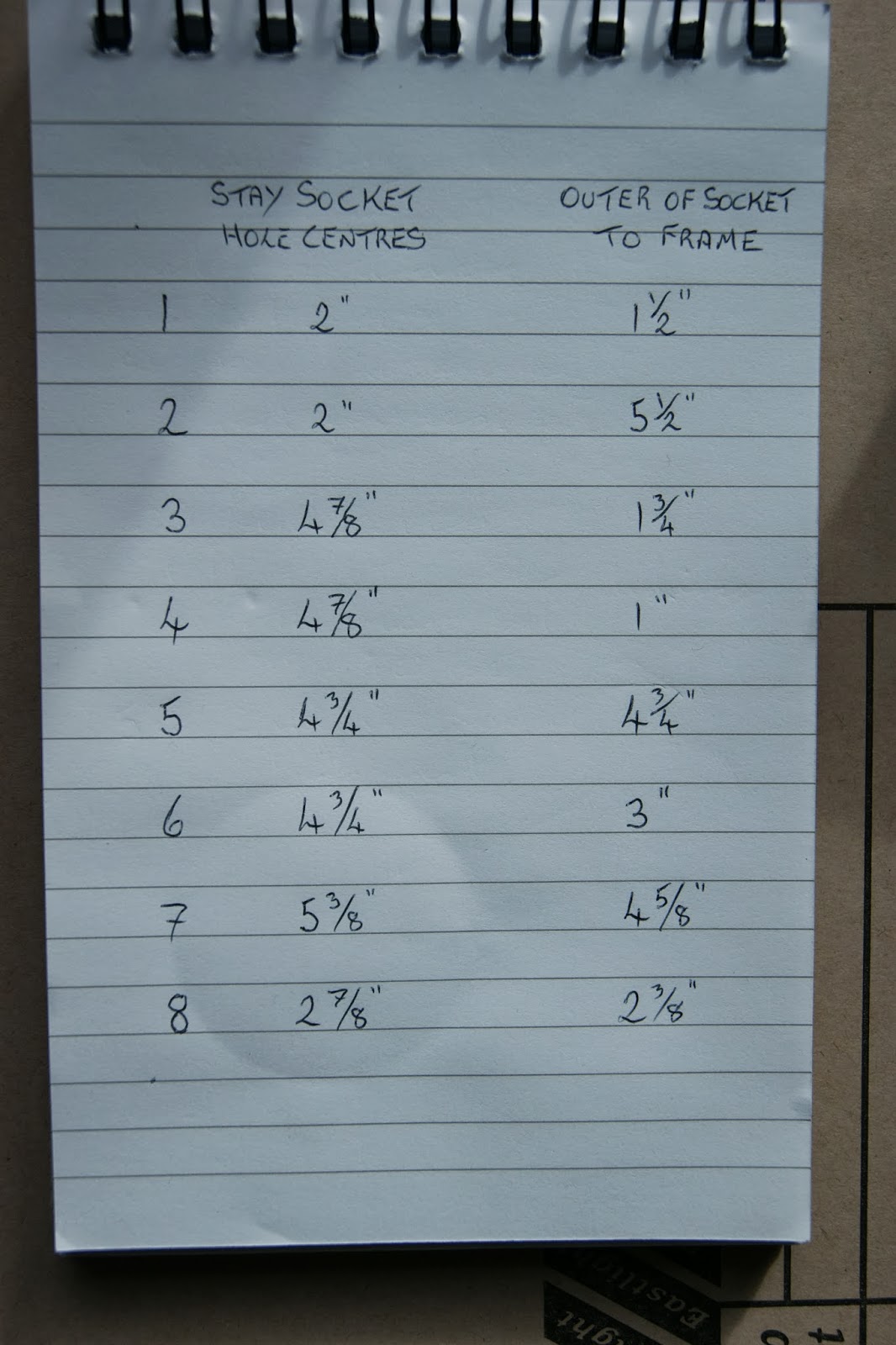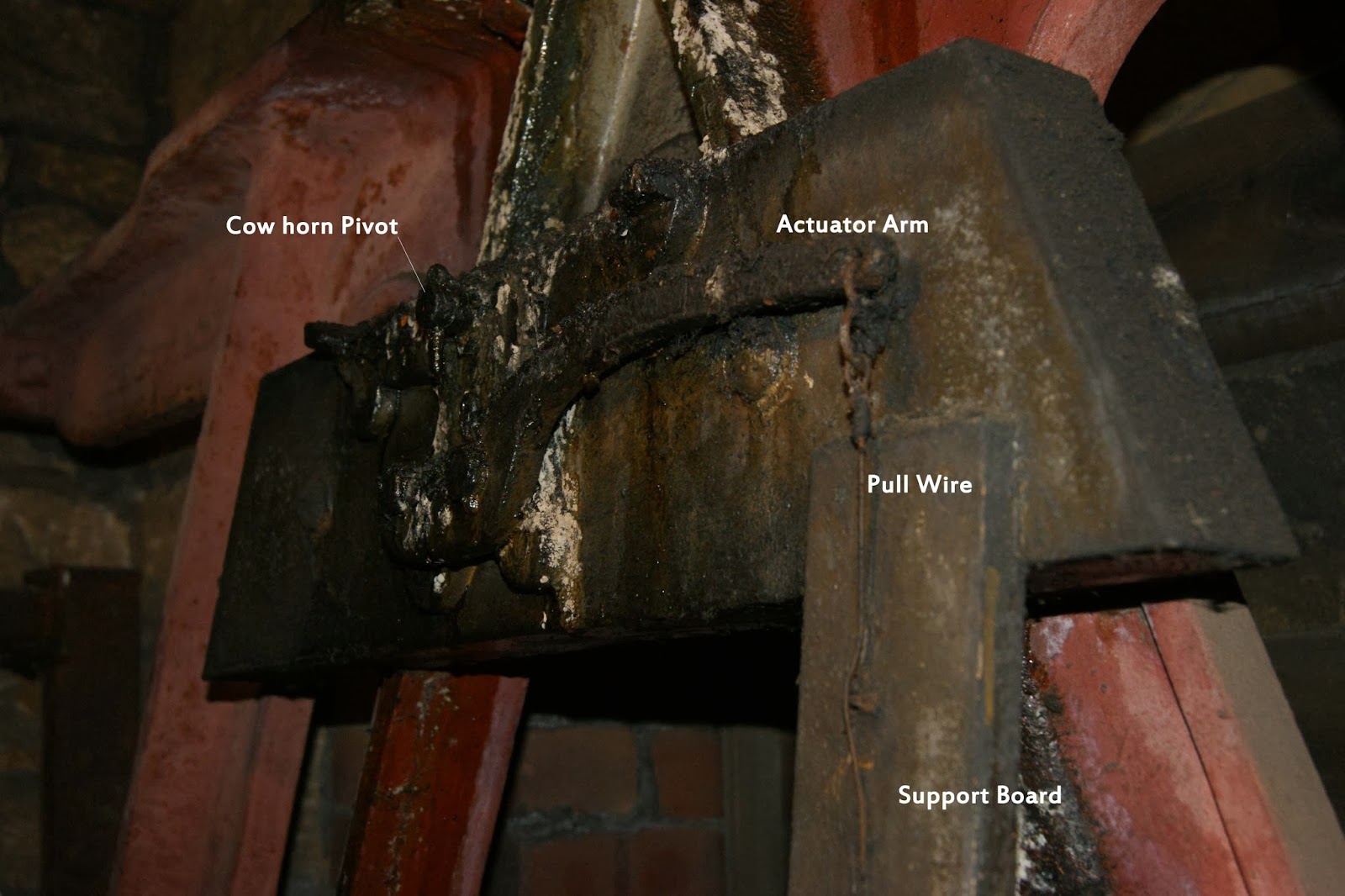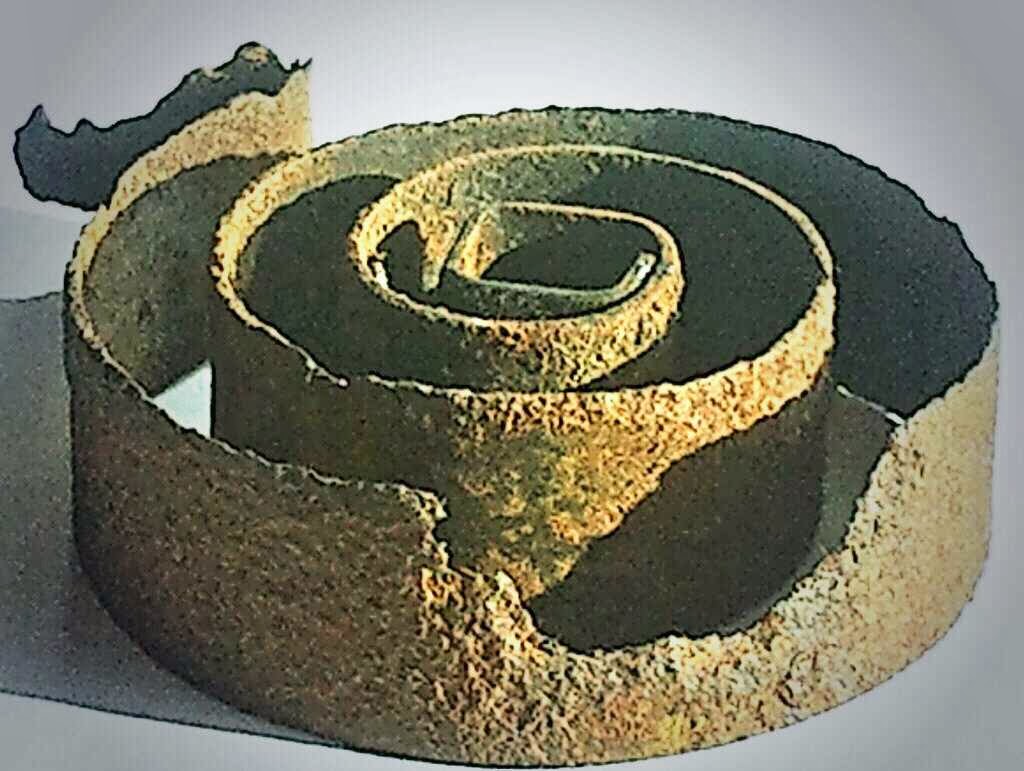The table above shows the Hole Centre's on the Headstocks and the clearance between the outside edge of the Stay Socket and the Bell Frame. Seage's Stay Socket Brackets have to fit within the clearance or they will clash with the frame as the bell rotates. Looking at the 4th, we only have 1" clearance; so that explains the countersunk heads on the fasteners for that bracket. Bracket thickness is 11/32nd of an inch; working in imperial fractions to stay with the Victorian era, the hex head bolts have larger head depths than is now normal so they would have clashed. Other brackets are 1/2" thick.
If I sort the brackets in size of Joggle, smallest first, they will fit the bells in the following order;
4, 1, 3, 8, 6, 7, 5, 2
The Seage's Bell Frame Casting is in the same position, relative to the Stay Side Bearing, on every bell; therefore the bigger the clearance the more joggle is required to engage with the Cowhorns.
I don't understand, yet, why the 8th has the second smallest hole centre size?



